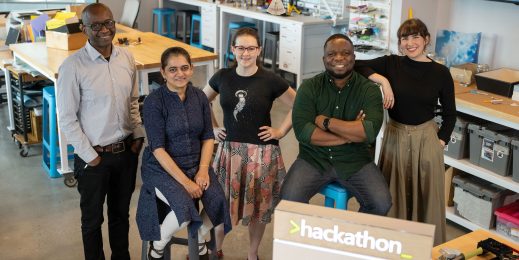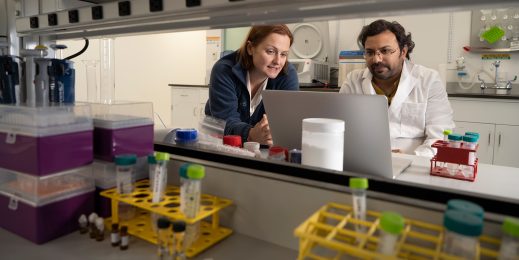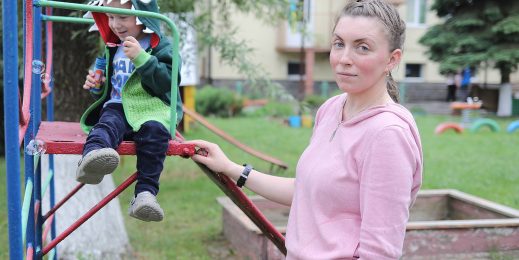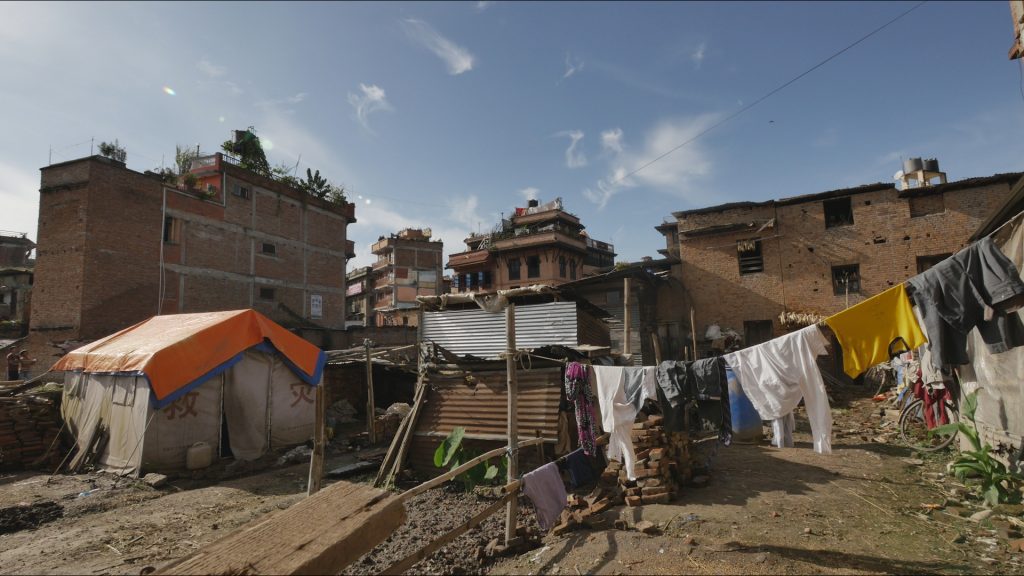
UN and Microsoft aid disaster recovery, economic development in Nepal
It was a Saturday last April, just before noon, when the earthquake began. Jamie McGoldrick, the UN resident coordinator in Nepal, had just returned from the gym to his house in Kathmandu.
“I was in a large house, but it seemed to jump at least three feet into the air, and moved like a ship in two ways, back and forth,” McGoldrick says. “I put my family in a safe place in the garden and then got on my bicycle to head to the UN office and account for the staff.”
The Nepali people have talked of the impending “big one” for years, but nobody really knew if this was it, or what it would be like. The shocking violence of the quake took everyone by surprise.
All across the region there were crumbling and damaged buildings, people standing in the streets in disbelief, some covered in blood, some desperately searching for their loved ones. When McGoldrick arrived at his offices, he was relieved to learn the UN staff had survived, but then the reports of the earthquake’s aftermath started coming in. There was devastation everywhere.
Nepal’s rudimentary buildings, some of them centuries old and made of wood, could not withstand the 7.8 magnitude quake’s ferocity. Nine thousand people lost their lives. In some regions entire villages were flattened. Upwards of 600,000 houses and other buildings were destroyed or severely damaged, affecting as many as 8 million people.
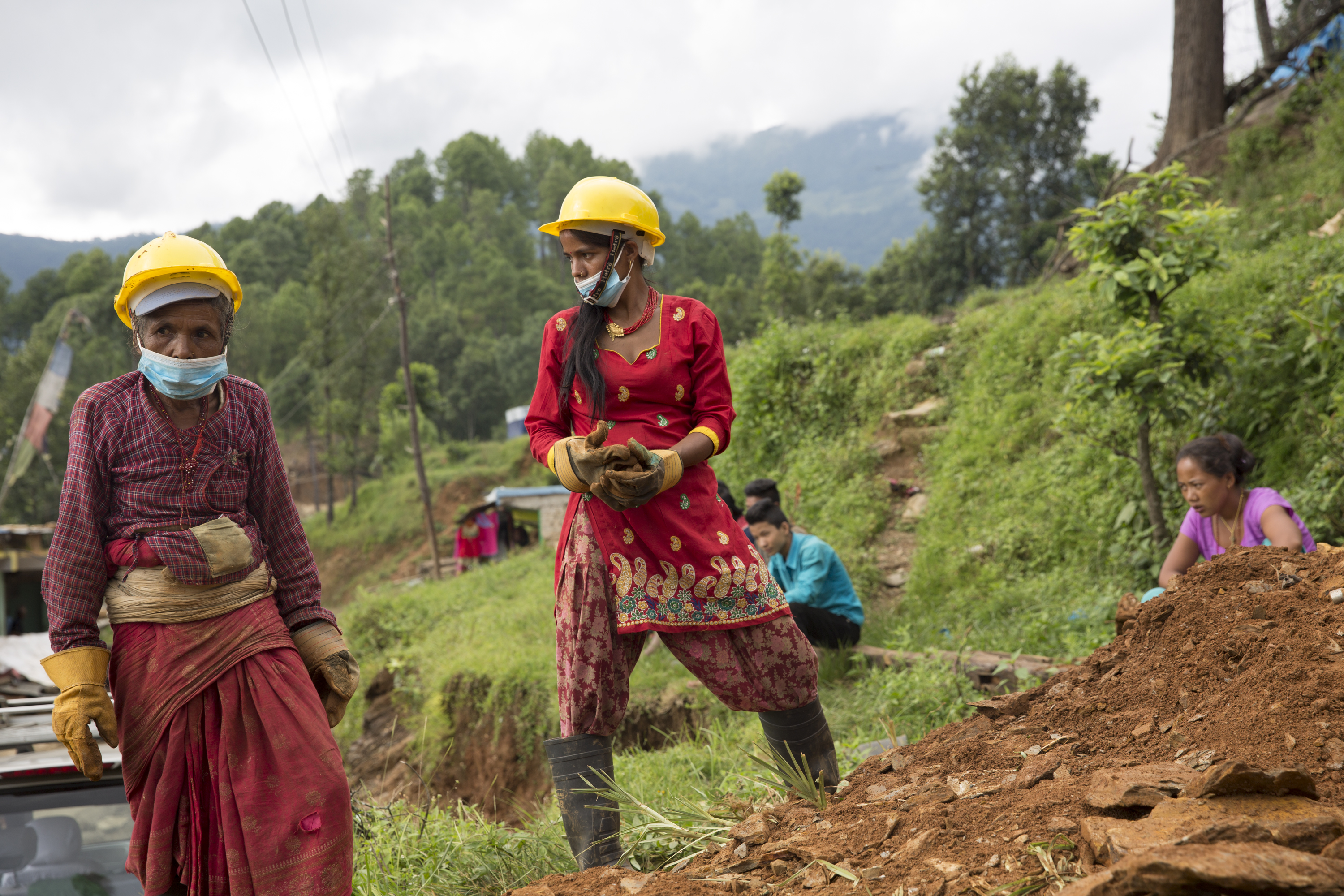
Right away, the massive international response began. With so many people dead, wounded or displaced, relief agencies across the world started sending funds, equipment and humanitarian aid.
For the United Nations Development Programme in Nepal, which McGoldrick also oversees, that meant taking on a huge coordination effort. Thousands of volunteers and professionals from around the globe were pouring into the country, millions of dollars were being donated. With many of the government services cut off and its infrastructure largely destroyed, they needed a way to manage and govern the immense task ahead.
“We knew the scale of the reconstruction was going to be massive,” McGoldrick says. “You’ve got to help government put services back in place, education, health, all of that. Then there are hundreds of thousands of buildings, not just houses but school buildings, hospitals, government offices.”
No time to prepare
Later that fateful Saturday, Dan Strode got a call at his home in Missouri from a relief organization out of Washington, DC. It needed his skills.
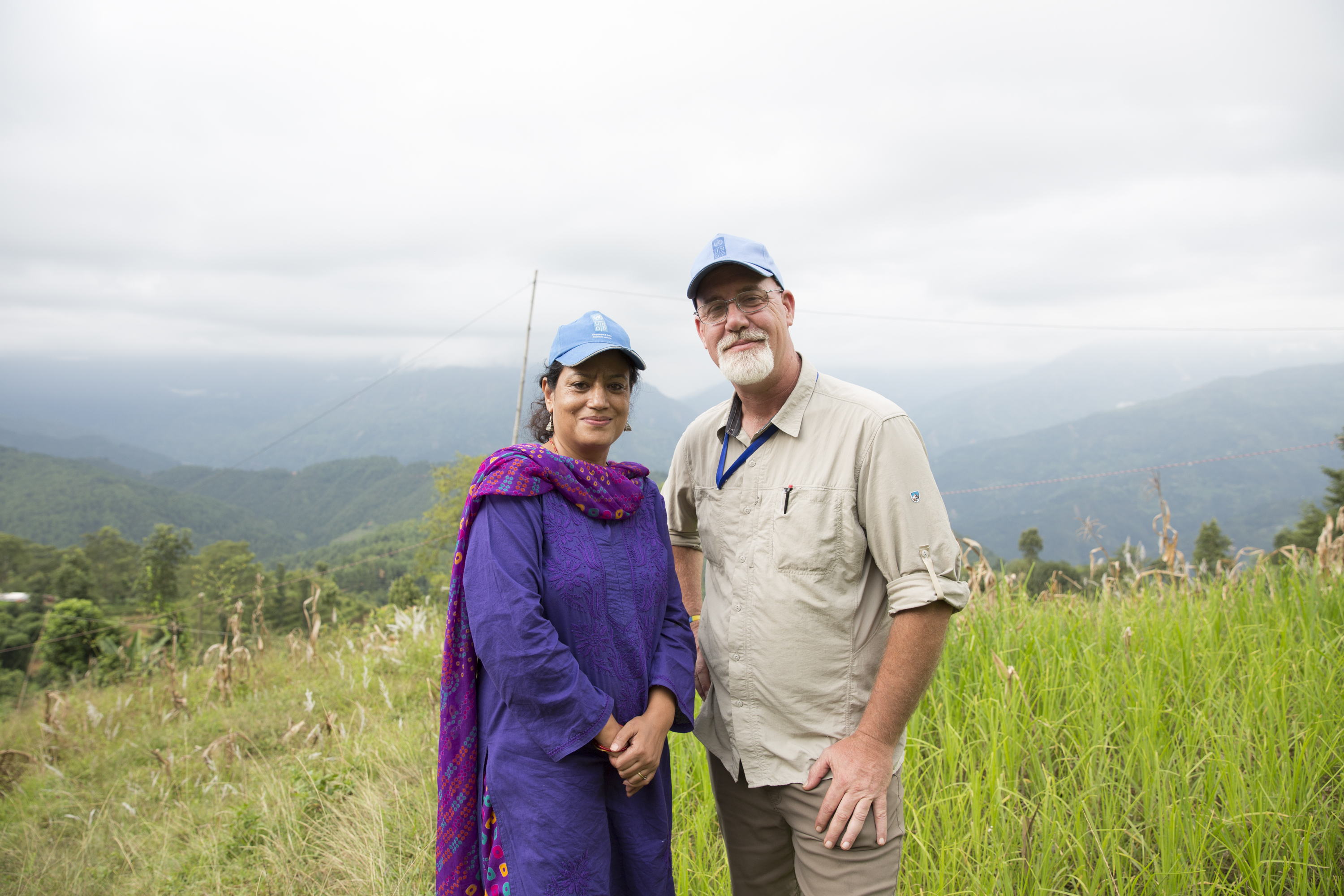
Originally a carpenter and blacksmith, Strode has become a sought-after expert in managing disaster response programs. He’s experienced the Indian Ocean tsunami in Indonesia, severe flooding in India, a devastating cyclone in Burma, the catastrophic earthquake that hit tiny Haiti in January 2010, and hurricanes Sandy, Katrina and Andrew in the U.S. At this point there are few people in the world who can claim as much experience as Strode in the field of natural disasters and their human, societal aftermath.
After settling his business in the States, Strode found himself in Kathmandu, reporting to the UNDP. With much of the country’s population in the affected areas living in tents, the urgency to complete the demolition process and begin reconstruction before a brutal winter sets in was extreme. The UNDP didn’t waste any time putting Strode and other experts to work. He was given one day to prepare before taking 30 UN volunteer engineers to a remote location to start demolishing wrecked buildings and clearing them for the rebuilding effort to come.
“There’s no time to prepare,” Strode says. “You have to bring the skills and tools necessary to do the job and go to work. That’s what happened and it hasn’t stopped since.”
In Nepal, the most dramatic challenge is the terrain. Strode found himself running teams across three villages roughly six kilometers apart. But with elevation gains up to 2,300 meters, and a local geography already predisposed to landslides exacerbated by a major earthquake, just getting from village to village typically takes an hour and a half.
The country’s mountain roads are hand built out of stone and feature not only stunning vistas, but treacherous stretches with drops of 100 meters or more. Seasonal monsoons further erode the conditions, and it’s not unusual to round a bend only to find a bus or a truck stuck in the mud, waiting for a tractor from the local village to pull it out of the way.
“But the people here never complain,” Strode says. “The travel and the terrain are an extraordinary challenge in these remote areas, but in order to be effective here, you have to accept the situation.”
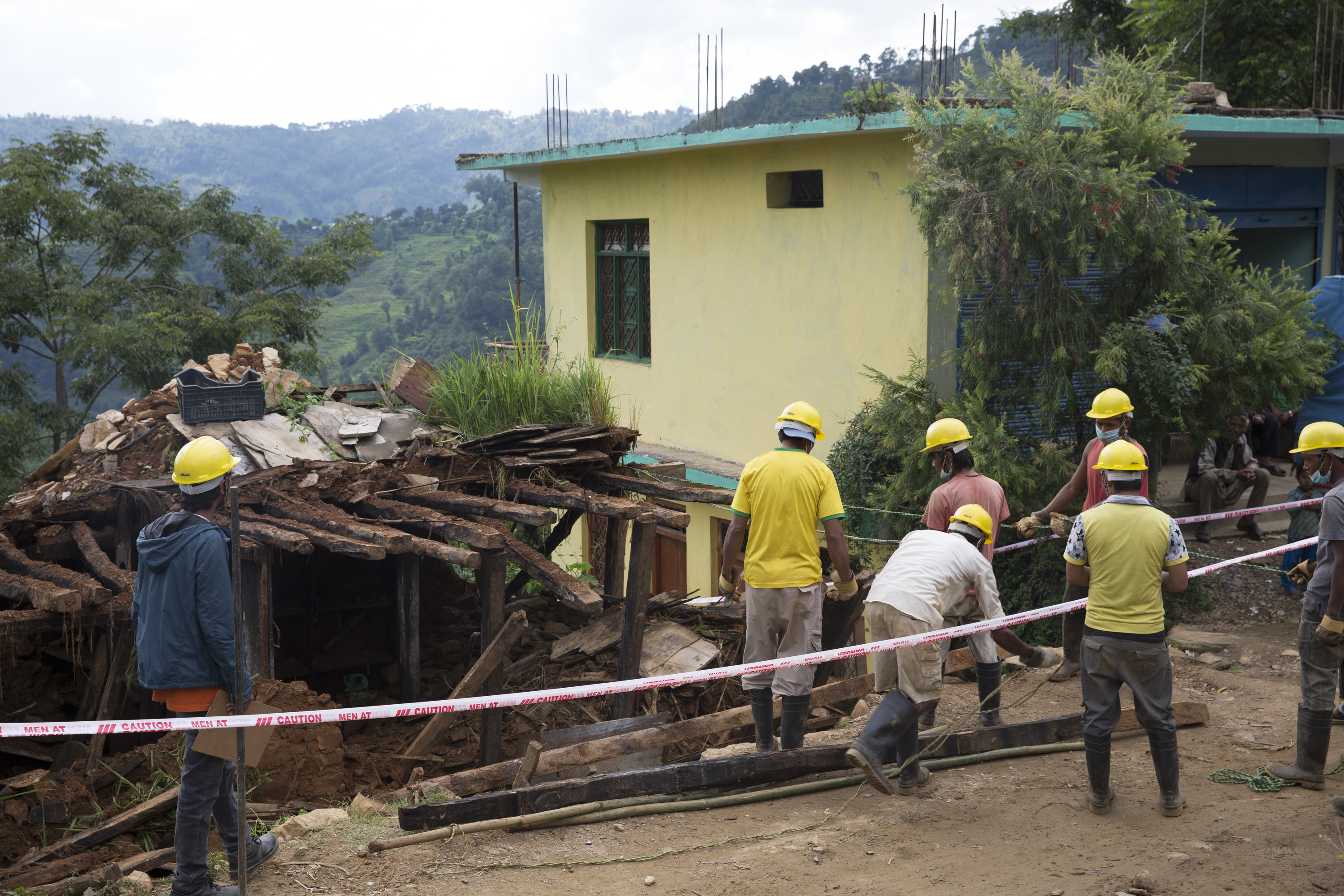
The demolition process
Whether it’s a private house or a public building like a school or hospital, teams mobilized by UNDP must do an official damage assessment together with the local officials before demolition can begin. In the past such records were kept on paper and in spreadsheets, but today UNDP’s team is using mobile phones, running the application developed at the MIC Nepal.
The app taps into the phones’ GPS capabilities, so the demolition crew can take precise coordinates for each building, along with the structure’s measurements. They identify the property owner, record a contact phone number, and secure the signed authorization that gives UNDP the right to demolish the building. Pictures of the building and its owner, along with all of the other relevant details, are added to each file, which is stored securely in the cloud.
The app also allows them to calculate the volume of debris that will be moved, the time it will take, any hazards such as medical or biological waste and other specific conditions of the site. All of that information becomes the basis for a demolition plan that lays out the order and sequence of the work, where the hazards are, and who needs to be protected.
“For instance if we’re doing a school, we can’t stop school while we’re doing the demolition,” he says. “School has to continue, and they have no other place to do it but the ground where the school once stood. We have to secure the area, keep the children safe, and do the demolition with school in progress.”
The process involves not only the safe removal of debris, but also recovering any materials from the building that can be recycled and used again. It may sound elementary, but it’s actually a huge benefit to the overall effort.
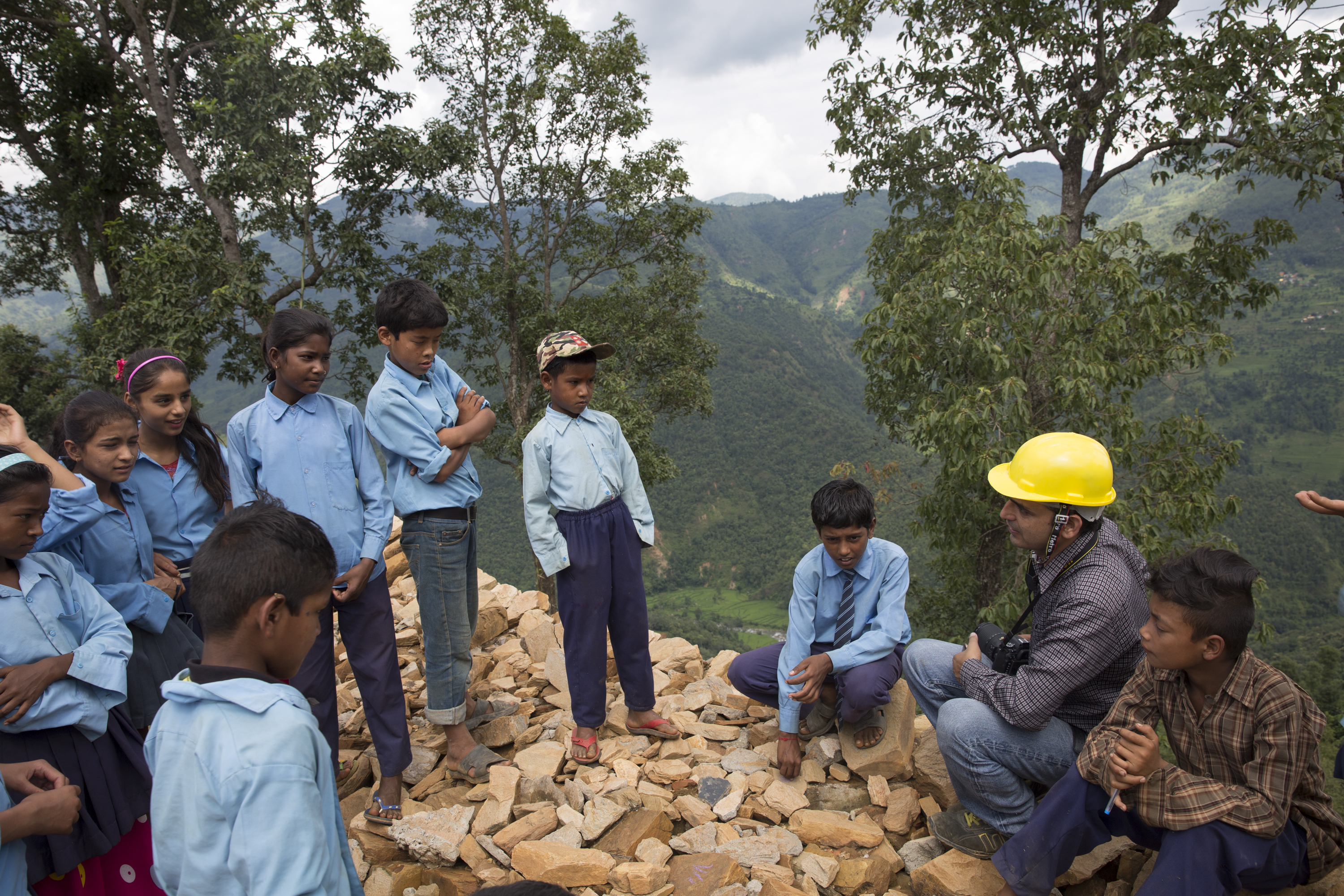
“UNDP started with about $1.9 million in funding, partly from its own Crisis Response Unit and partly from Japan for the debris management program,” Strode says. “Through that, we have employed over 3,000 local people. We have accomplished over 2,000 safe demolitions. And from those we’ve recovered $11 million worth of recyclable material.”
Rebuilding the local economy
One of the primary reasons the UNDP is in Nepal in the first place is to aid in the economic development of the country. Nepal currently has a per capita income of around $715, and aims to double that over the next decade by creating entrepreneurs within the country and by stimulating foreign investment.
“Our job is to try and support the government to tackle those issues,” says UNDP’s McGoldrick. “Our programmes support a more equitable development model, with more inclusion for marginalized communities.”
As a way to help tackle that broader goal while also providing needed manual labor for the debris reclamation and reconstruction efforts, the UNDP, with support from the Government of Japan, has established what they call the Emergency Employment Program (EEP), which provides daily cash payments to locals who have lost everything from the earthquake. When so many of the region’s buildings were destroyed, much of the local economy went with them, so the program provides the dual benefit of bringing a real labor force to the massive job site, as well as keeping cash flowing through the community.
The same app used to keep the debris removal records also coordinates the EEP, tracking payments, authorizations and attendance, forming the administrative backbone of the program to keep local people working.
“These people have lost their homes, their jobs, family members and loved ones,” Strode says. “The Emergency Employment Program provides livelihoods in the midst of the devastation, and helps put these communities on the road to reconstruction.”
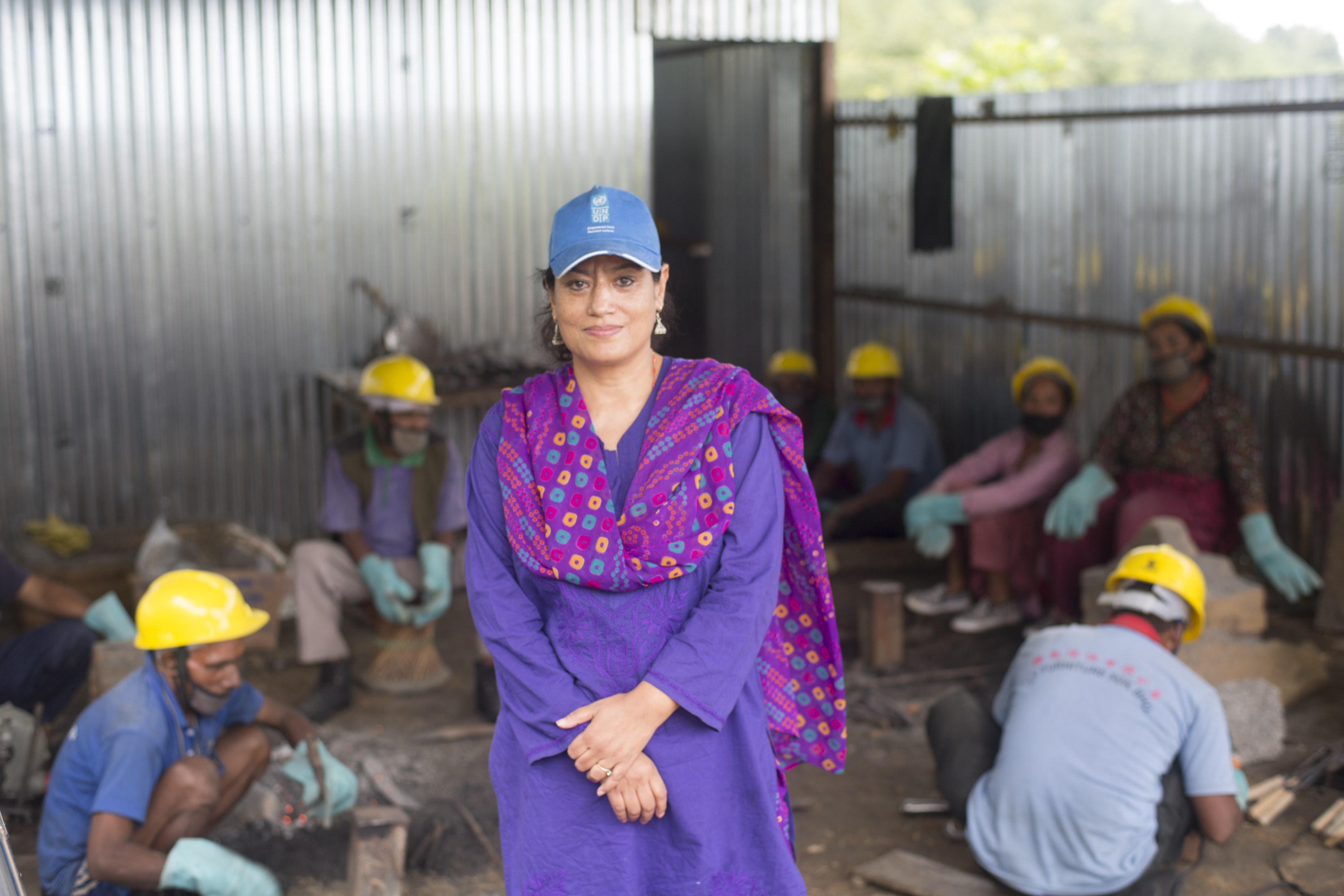
While emergency employment provides a needed influx of cash for the community, another program is helping local people create their own economic opportunity. Since 1998, the UNDP has worked in Nepal to foster economic sustainability and growth through the Micro-Enterprise Development Program known as MEDEP, which has most recently been funded by Australian Aid.
The program is focused on improving the livelihood of the poorest residents of Nepal, especially women, who are often disenfranchised in the country’s male-dominated culture, as well as the socially excluded groups of the population.
MEDEP provides training and support in entrepreneurship and business, including marketing, technology, microfinance and other services. Nabina Shreshtha from UNDP who is responsible for MEDEP, has worked for the last 15 years on this mission. In that time, MEDEP has created more than 70,000 entrepreneurs — 70 percent of whom are women.
“We not only provide them with training and necessary skills,” she says. “We also bring them into a group so they get the added social support they need and support each other too. Sometimes they just need a little push, and they can do a lot.”
After the earthquake, with the support from Australian Aid, UNDP launched a recovery programme called Rapid Enterprise and Livelihoods Recovery Project (RELRP) to provide express support to micro entrepreneurs who lost their businesses after the earthquake. RELRP focuses on seven of the hardest-hit districts, where as many as 90 percent of local businesses were damaged, crippling an already fragile economic ecosystem. The group works to revive entrepreneurship in those areas to help resuscitate the local economy.
Since their efforts involve analysis of skills, resources and markets, they’ve explored how they use technology as well. Proposals and trials include finding new ways to analyze regional markets and talent pools, target new opportunities for participants, and measure their success. Another idea is to create an online marketplace for these micro-enterprises to sell to a broader audience.
The program’s success stories are piling up. Recently the Turkish Anadolu Agency profiled the making of a popular textile out of abundant nettles in the area. While making the textile itself is a local technique, MEDEP provided the advanced training in technology and business to help turn it into an enterprise. Known as Himalayan Nettle Products, the woman-owned company now employs more than 3,000 people, supplying the popular textile to a local carpet factory and also exporting it to Europe and the U.S.
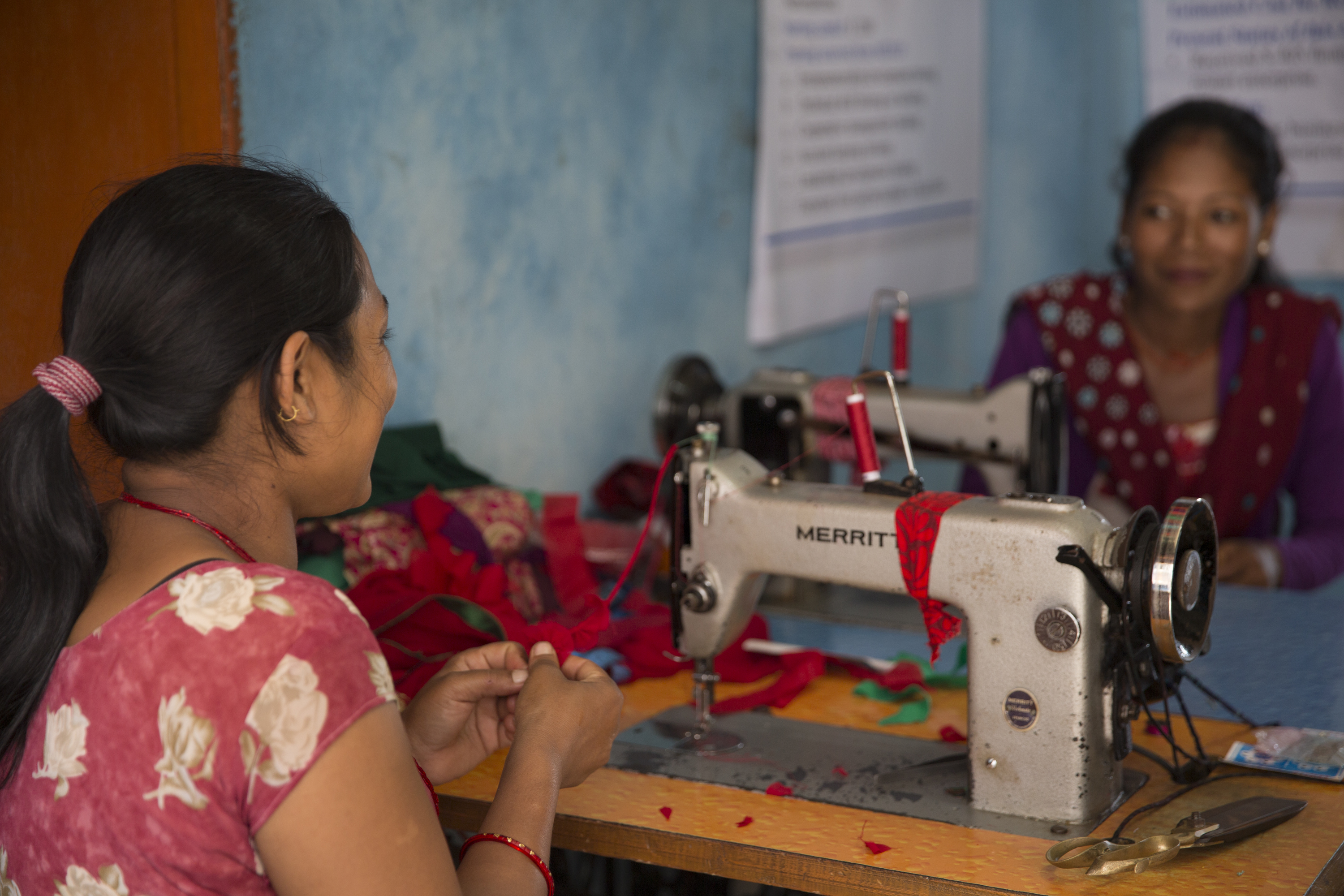
Another company that got its start with MEDEP is making an herbal soap based on a flower that grows in the region. That company is not only supplying its products to the urban areas around Kathmandu, but also exporting to Japan.
“There are so many examples that have become successful,” Shreshtha says. “Some have remained small, and some have really expanded. They are not micro anymore.”
Technology’s broader human impact
According to Strode, the impact of technology in a disaster area goes well beyond coordination and paperwork — it can actually save lives. It’s a lesson he learned dramatically during the 2010 earthquake near Port au Prince, Haiti, where a quarter million people and some 700,000 homes were lost.
As bad as the situation in Nepal is, Haiti’s earthquake dwarfs it in terms of sheer devastation. According to Strode, the amount of debris there reached 20 million cubic meters of material.
“The last time there was that much debris was in Dresden, post WWII Germany,” Strode says. “The task is so overwhelming. There’s so much to do. You just go to work, but as you do that, you realize the magnitude. You realize the importance. And you realize you’re under-resourced.”
In that situation, Strode says, things can quickly escalate and turn chaotic as hundreds of residents scramble to claim their living space with no surveys or government records to support anyone’s right to a particular location.
“This is when the technology makes difference,” he says. “If you have your phone and could take a GPS point on four corners of a house before you demolished it, take a picture and record that information, you can create security for people to find their home again. And that’s what we’re doing here in Nepal.”
Rebuilding the road ahead
Development of the disaster-relief technology was made possible by the MIC Nepal, directed by Allen Tuladhar. He says offering to help with technology was a natural response for his team of local developers.

“After the earthquake, spontaneously everyone in the country was trying to help,” he says. “On the street people were handing out boxes of ramen, water cans, tarpaulins. We work with technology, so that was our way to contribute.”
UNDP had already launched some of its early recovery programs, including the debris management, but given the scale of work lying ahead, the business as usual was not enough. UNDP’s management team reached out to MIC Nepal to join in immediately with new technologies to help manage their large scale recovery programs.
Tuladhar’s team agreed, and after determining the scope of the app and the technology involved with the UNDP, the MIC Nepal team developed it under an intense timeframe, working through the night for three straight days before demoing the technology to volunteers. “There is no looking back after we started the partnership, we have already a successful prototype ready to be scaled up,” says Tuladhar.
Built using Visual Studio, the solution uses the Microsoft Store to push the app to Windows phones in the field, while connecting on the back end with Office 365, Power BI, SQL Server and Microsoft Azure. Later versions would also incorporate a hybrid storage approach using on-premises servers with backup to the cloud. The end result is a cost-effective, flexible way to oversee a complicated operation that the UNDP had originally feared would require a much more substantial investment.
“In the initial meeting, they were looking at getting a laptop, a GPS device, a digital camera and an Internet dongle to go along with it — about $2,000 worth of equipment for every person in the field.” Tuladhar says. “In the end we replaced all of that with a $70 Windows phone.”
While the international community has previously attempted to digitize the sensitive and difficult process of keeping records during a disaster, there has never been a solution capable of being reused. In that way, McGoldrick says, the technology from UNDP and Microsoft has the potential to revolutionize how the world responds to disasters forever. And in fact, the UNDP has recently launched a crowdfunding effort to help make that possible.
“This app, built here in Nepal by Nepali developers, can be the template,” he says. “We can hand it off to the next government right at the beginning, so they can record where people live, where they come from, everything else, and store all of that information both on-premises and in the cloud.”
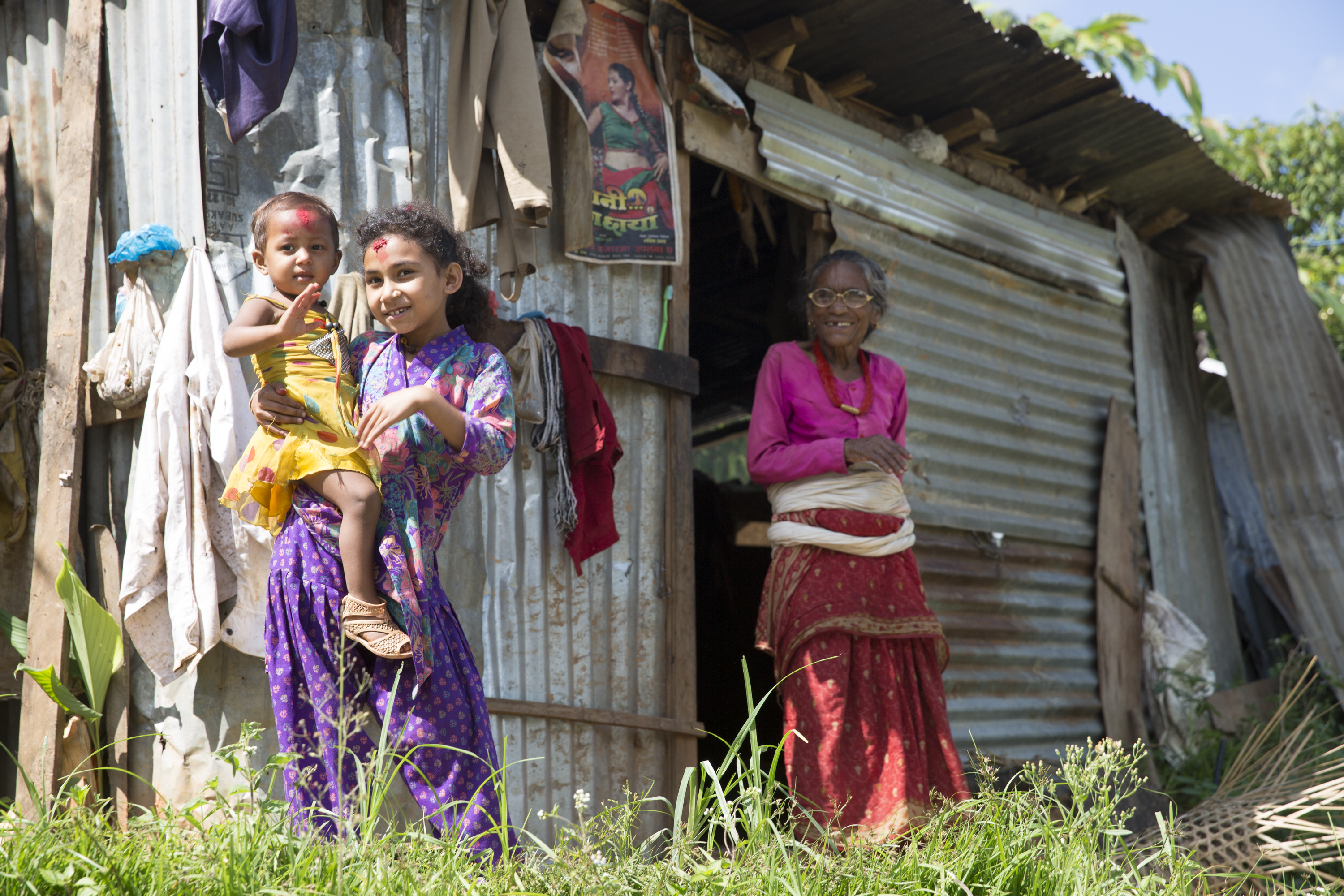
According to McGoldrick, using the technology on day one of a disaster can create critical efficiencies later on. Instead of waiting for demolition and construction crews to start keeping records, relief workers can begin collecting information immediately, as victims and refugees are being triaged in the field. Those digital records in turn can be used to locate and reunite families, and provide continuity as the relief efforts continue.
“We can track what we’re giving people and where they are,” McGoldrick says. “With all of that information already in the cloud, we have a helicopter view on what is happening and where, and whether people in need of aid were reached and supported.”
While the demolition and debris recovery operation is well on its way, there is much yet to be done, and ultimately, McGoldrick says, demolition is just the beginning.
“The idea of the demolition is to pave the way for reconstruction,” he says.
Storing records securely in the cloud can help rebuild census data, property records, land tenure rights — important needs for developing nations with rudimentary record-keeping systems. It can also allow relief agencies to hand off the valuable records created during the early phases of the disaster to help jumpstart reconstruction, passing them along to reconstruction firms as well as the donors and umbrella organizations in Sweden, the U.S., Germany and elsewhere, giving them insight into where the money is going, and how much will be needed as the nation struggles to get back on its feet.
“It’s so huge,” McGoldrick says. “We can revolutionize the entire global response to disasters. With a cell phone, we can change the world.”
Lead image: Temporary dwellings amid the destruction in Nepal’s capital city, Kathmandu.






